Experience the Essence of Argentina with Pablo
Immerse yourself in the heart of Argentinean tradition with Pablo's Asado, a culinary masterpiece that embodies the soul of South America's vibrant flavors.
The Story of Asado:
Picture yourself amidst the vast expanse of Argentina's plains, where the sun sets in hues of crimson and gold, and the air hums with the crackling of firewood. Here, amidst the rugged terrain, lies the sacred ritual of Asado—a time-honored tradition that traces its roots back to the legendary gauchos.
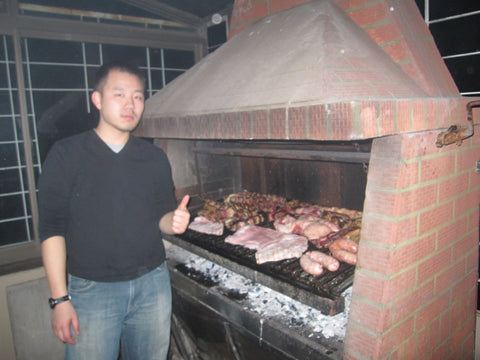
For Pablo, Asado is more than just a culinary journey—it's a nostalgic odyssey to the spirited gatherings of his youth, where the aroma of roasting meat mingled with laughter and song. From the remote ranches of the Pampas to the bustling streets of Buenos Aires, Asado has woven its way into the very fabric of Argentinean life, symbolizing camaraderie, hospitality, and the joy of shared moments.
Asado, a brief introduction
The Asado Experience: A Culinary Journey Through Argentinean Tradition
In the vast expanse of the Argentinean countryside, there's a tradition deeply rooted in the cultural identity of the nation—a tradition that transcends just culinary indulgence and embodies a way of life. This tradition is none other than the Asado, a revered ritual of communal grilling that has been passed down through generations, shaping the collective consciousness of the Argentinean people.
Origins of the Asado:
To understand the significance of the Asado, one must delve into its origins, which can be traced back to the indigenous peoples of South America. Long before the arrival of Spanish colonizers, indigenous tribes inhabited the fertile lands of present-day Argentina, practicing open-fire cooking methods to prepare their meals. It was a simple yet effective technique, utilizing natural resources to imbue food with flavor and depth.
With the arrival of Spanish conquistadors in the 16th century came a pivotal moment in the evolution of Argentinean cuisine. The introduction of cattle to the fertile plains of the Pampas forever altered the culinary landscape, giving rise to the iconic figure of the Gaucho—the Argentinean cowboy. It was the Gauchos who embraced the tradition of grilling meat over an open flame, a practice they inherited from the indigenous peoples they encountered.
The Ritual of the Asado:
At its core, the Asado is more than just a method of cooking—it is a sacred ritual, a time-honored tradition that holds deep symbolic significance for those who partake in it. The preparation of the fire, the selection of cuts, and the gathering of loved ones all play a crucial role in the Asado experience. Each step is carried out with care and reverence to the diners, as they are friends and/or family who have joined the Asador for this communal joint experience.
The Asado begins with the building of the fire, a task entrusted to the Asador, or grill master, whose skill and expertise are revered among participants. The fire must be carefully tended, stoked to just the right temperature to ensure a slow, even cooking process. Once the flames have died down and the coals are glowing red-hot, the real magic begins.
The Cuts of Meat:
Central to the Asado experience is the selection of cuts, a process that is steeped in tradition and guided by centuries of culinary wisdom. Argentinean Asado is renowned for its wide variety of meats, each offering its own unique flavor and texture. Among the most common cuts are:
1. Asado de costillar or Asado de tira: Also known as beef short ribs, this cut is prized for its rich marbling and distinctive flavor. It is often seasoned simply with salt and cooked over a slow, smoky fire until tender and caramelized.
Below: Asado de costillar a la cruz

Below: Asado de Tira (Translation: Strip of Asado)

2. Chorizo: Argentinean chorizo sausages are a staple of the Asado, prized for their bold flavor and juicy texture. Made from a blend of pork, beef, and spices, chorizo is typically grilled until charred and crispy on the outside while remaining tender and moist on the inside.
3. Morcilla: Morcilla, or blood sausage, is a traditional Argentinean delicacy made from pork blood, onions, and spices. It is often grilled until crispy on the outside, with a rich, savory flavor that pairs perfectly with the smokiness of the fire.
Below: Chorizo, Morcilla, and matambre a la pizza
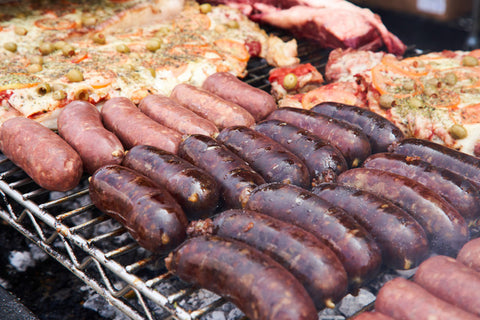
4. Vacío: Vacío, or flank steak, is a versatile cut of meat prized for its intense beefy flavor and tender texture. It is typically seasoned with salt and cooked over a high heat until charred on the outside and juicy on the inside.
Blow: Vacio or flap steak
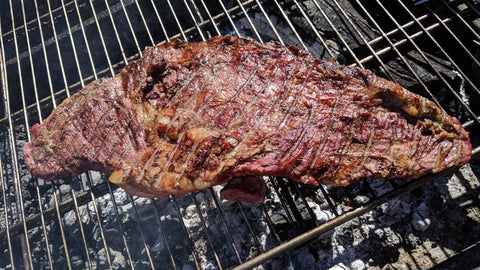
5. Mollejas: Mollejas, or sweetbreads, are a delicacy in Argentinean cuisine, prized for their delicate flavor and creamy texture. They are often grilled until golden brown and crispy on the outside, with a tender, melt-in-your-mouth interior.
The Social Aspect:
Perhaps the most defining aspect of the Asado is its social nature. It is a time for friends and family to come together, to share stories, laughter, and, of course, delicious food. The atmosphere is relaxed, with guests encouraged to linger around the fire long after the meal is finished, which leads us to sobremesa, a term that has no direct translation to English.
Sobremesa and Mate:
After the meal, it is customary to engage in sobremesa, or after-dinner conversation, as a way to prolong the enjoyment of the Asado experience. This time of relaxed conversation allows participants to digest their meal, savoring the gathering.
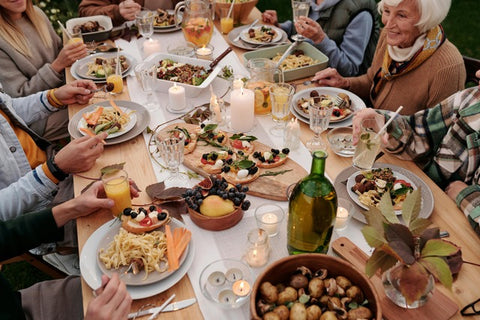
No Asado would be complete without mate, the traditional Argentinean and Uruguayan herbal tea. Sipped from a shared gourd and passed around the circle, mate is a symbol of hospitality and friendship, fostering a sense of unity among participants.
Regional Variations:
While the basic elements of the Asado remain consistent throughout Argentina, there are regional variations that reflect the diverse culinary landscape of the country. In the Pampas region, for example, beef reigns supreme, with hearty cuts of meat grilled over a wood fire. In the Patagonian south, lamb and goat are more prevalent, reflecting the nomadic lifestyle of the region's inhabitants.
The Asado Today:
In modern-day Argentina, the Asado remains a cherished tradition, passed down from generation to generation, and enjoyed multigenerationally, as families gather together. It is a symbol of national identity, a source of pride, and a testament to the enduring power of culinary heritage. While the world around us may change, the Asado endures, serving as a reminder of the simple joys of good food and good company.
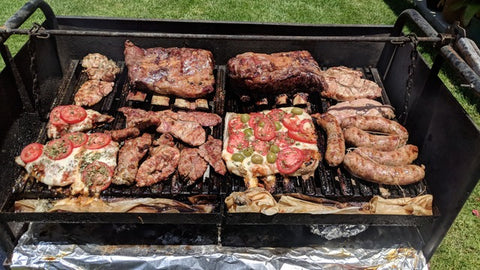
In Conclusion:
The Asado experience is a celebration of Argentinean culture, history, and tradition. It is a time-honored ritual that brings people together, fosters a sense of community, and honors the legacy of generations past. As an Argentinean meat eater, I am proud to share this rich culinary heritage with the world, inviting all to partake in the timeless tradition of Asado.
And don't forget to get Pablo Kim's Chimichurri!

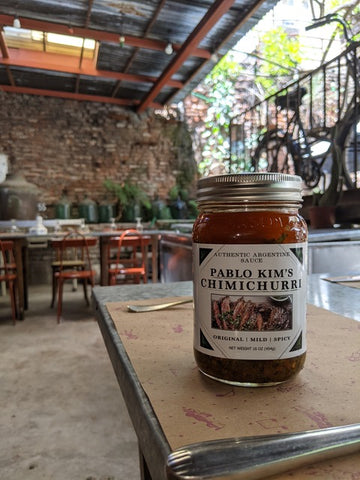

0 comments